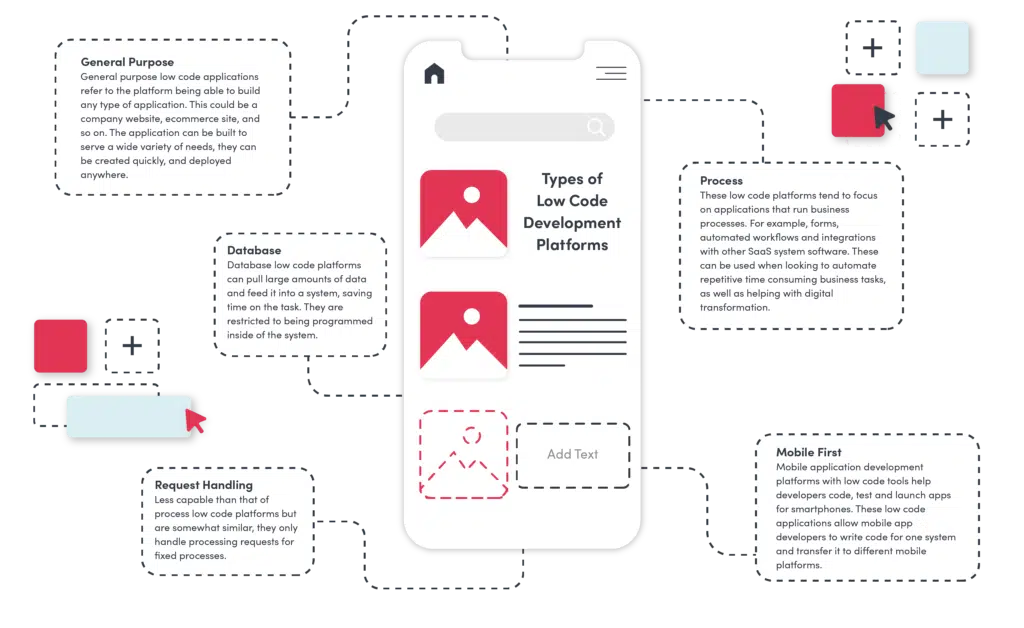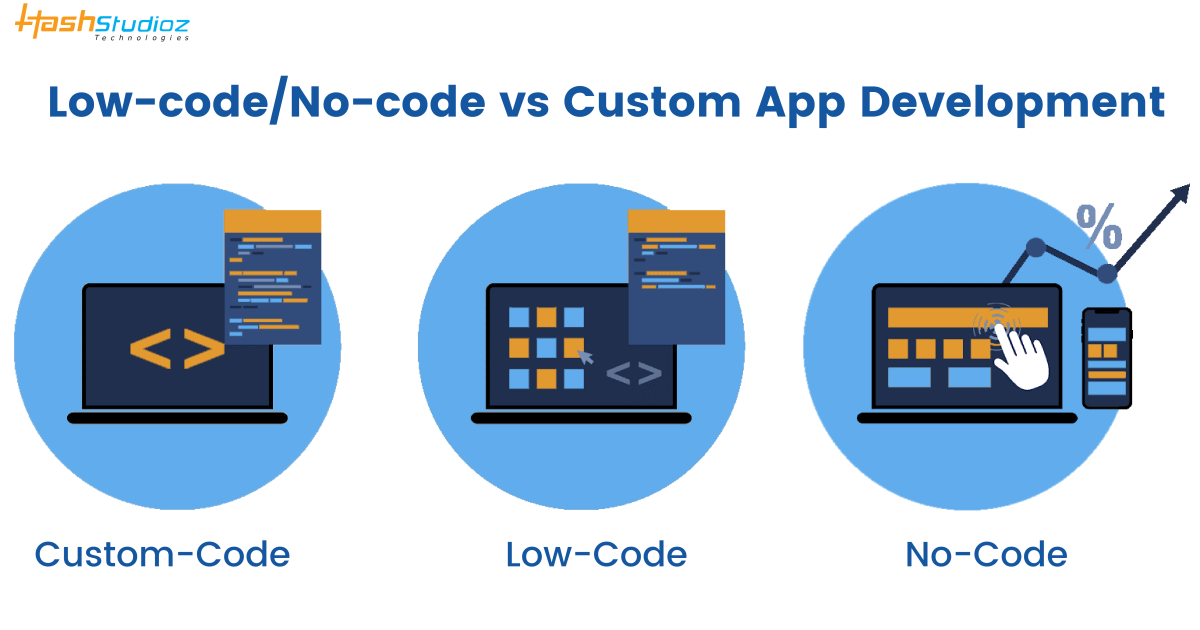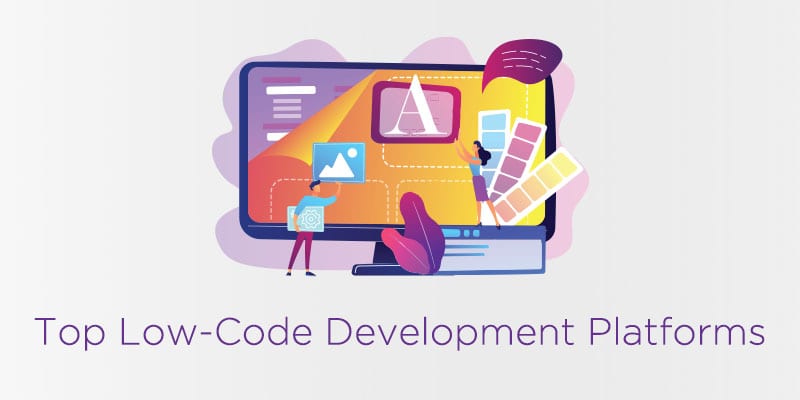Best Advice To Picking Low-Code Platform Examples
Best Advice To Picking Low-Code Platform Examples
Blog Article
Benefits Of Low-Code Development To Non-Developers With Regard To Accessibility
App development that is low-code improves accessibility for non-developers (often referred to "citizen-developers") because of a few key factors.
Drag-anddrop Builders: Lowcode platforms include drag-anddrop interfaces to enable non-developers to create visually appealing applications, without having to codes. The process of developing applications is now more accessible to people with no technical background.
WYSIWYG editors: These "What You See is What You get" editors allow users to create workflows and interfaces that are similar to the final product. This makes it simpler to use and understand.
Simple Workflow and Logic Design
Visual Workflow Modeling - Users can develop business processes and logic applications using visual flowcharts and models. This is a lot more intuitive than traditional programming methods.
Low-code platforms usually come with pre-built logic elements (e.g. condition statements, loops), which reduce the need for complicated coding.
Reusable Components and Templates
Libraries of prebuilt templates Low-code platforms typically provide templates libraries for the most popular types of applications. This gives non-programmers the ability to begin with a solid basis and then modify it according to their needs.
Reusable widgets and modules The process of creating web pages is made simpler through the use of reusable components and modules. This means that there is less need for deep technical knowledge.
Guided Development and Tutorials
Step-by-Step Instructions: Platforms usually provide tutorials on screen, guiding development pathways, as well as other tools to assist non-developers create applications.
Interactive Tutorials - Interactive tutorials that let you interact with the platform will aid in learning and increase confidence.
Integration of existing tools:
Easy Integration - Low-code platforms can be easily integrated with existing systems and tools for business (e.g. ERP, CRM) that give even non-developers to build apps that are compatible into their workflows.
APIs and Connectors : APIs integrated into connectors and APIs enable users and non-developers to connect applications to external services, without the need for complex coding.
Collaboration Features:
Team Collaboration Features, like real-time collaboration and shared workspaces, help professionals and non-developers to work together effectively.
Access levels are able to be set for non-developers to make sure they are able to contribute to development, without compromising the security.
Automated Testing and Debugging
Test tools are included: Many low-code platforms have built-in debugging and testing tools. These tools streamline the process, making it easier for non-developers to ensure their apps are functioning properly.
Error Highlighting When problems occur the platform highlights them and suggests solutions. It helps non-developers in troubleshooting.
The capability of low-code apps to allow development for non-developers is its biggest benefit. With its an intuitive, visually-guided tool and experiences, low code platforms enable business owners to actively contribute and manage applications. Take a look at the recommended click this for Low-code Platform for application development for website advice including multiplatform mobile app development, no code platforms, cross platform mobile development, application development platforms, cross platform mobile app development, cross platform app development, cross platform mobile dev, push alerts, app modernisation, rapid application design and more.
Benefits Of Low-Code Application Development In Terms Of Scalability And Flexibility
Low-code application development has many advantages in terms of adaptability and scalability, which are vital to build applications that can adapt to business demands and be able to adapt to the changing demands. These are the most significant benefits:
Cloud-Based Deployment: Many low-code applications are cloud-based, enabling applications to scale easily with the cloud infrastructure. This lets businesses handle the increased workload without having to manage servers.
Auto-Scaling Functions: Auto-scaling features can be utilized to automatically adjust resources in response to the demand. They ensure that performance is consistent in peak hours.
Flexible Architecture:
Modular Design: Low code platforms encourage modularization of applications. This allows components to be developed independently, tested and scalable. This flexibility improves flexibility and enables easier modifications or expansions to specific parts without impacting the whole system.
Microservices Architecture: Microservices architecture supports the creation of applications by creating a loosely coupled set of services. This allows for greater capacity and flexibility.
Customizable Solution:
Extensibility: Low-code systems typically allow custom coding and scripting, enabling developers to enhance the capabilities of their applications beyond the capabilities that are available in the standard. This allows for the fulfillment of business needs that are unique without limitations.
Third-Party Integrations: Companies are able to add additional functionality and services into their applications by integrating with APIs and third-party services.
Agile Development Deployment, Agile Development Agile Development:
Continuous Delivery and Deployment: Low-code platform support agile methodologies enabling continuous integration, continuous delivery (CI/CD). This allows for rapid deployment of updates and new features, which allows applications to evolve quickly in response to user feedback and changes in the market.
Iterative Development: Because of the iterative nature low-code programs can scale and improve gradually. This minimizes risks associated with significant changes and allows for more controlled expansion.
Resource Optimization
Efficient Resource management: Low-code platform tools assist in optimizing the use of resources by monitoring and managing the performance of applications. This helps ensure that resources are being used effectively. They can also be scaled up or down according to actual needs.
Load-balancing: Features that spread workloads equally among servers increase the application’s ability to handle massive traffic and guarantee consistent performance.
Global Reach
Multi-Region deployment: Low-code applications typically allow deployment in multiple geographical regions. This enables businesses to offer low-latency service to users from all over the world. This is vital for applications that serve users from all over the world.
Localization Support built-in support for localization lets applications easily adapt to various languages and regional requirements, enhancing their flexibility in various markets.
Maintenance and updates:
Simplified maintenance: The visual and module design of low-code software makes it easy to perform the maintenance tasks. They allow updates and bug fixes to be made quickly without a long period of downtime.
Version Control: A fully integrated version control software helps manage changes and rolls backs. This means that updates are easily installed and older versions restored when needed.
Cost Efficiency:
Low Development Costs. Through the reduction of coding requirements, low-code platform platforms reduce the development cost and enable applications to be scaled up without increasing the development efforts.
Pay-As.-You-Go: Many lowcode platforms offer flexible price models, including pay-as.-you-go. These align costs to actual usage and growth, allowing financial flexibility.
The flexibility of low-code apps lets businesses develop strong and flexible, scalable and durable applications. These platforms enable rapid adjustments to meet changing requirements, efficient resource use, and continual improvement, making sure that applications can expand and change with the business. Check out the most popular Enterprise application development with Low-code Platform for blog info including azure sql databases, microsoft azure sql, cross platform mobile app development, develop mobile application, develop mobile application, rapid app development, app dev platform, low code platforms, app dev platform, cross platform mobile app development and more.
Benefits Of Low-Code Application Development In Terms Of Community Support And Vendor Support
Low-code development platforms for applications are a great way to get support from the vendor as well as community participation. Both of these aspects are vital for ensuring an effective implementation and continuous maintenance of the application. These are the main advantages: Support from vendors
Comprehensive Technical Support:
Support Teams: Several platforms using low-code have dedicated support teams to assist with technical problems or troubleshooting, as well as guidance.
24/7 Support Some suppliers are available all hours of the day, which is beneficial to businesses that operate in multiple time zones.
Training and Onboarding
The structured training programs offered by vendors offer structured training courses, such as webinars or certification courses. This helps users to quickly get to grips with the platform.
Personalized Onboarding: Many companies offer personalized onboarding to assist new customers use the platform in a way that is effective and customize it to meet their needs.
Regular Updates and enhancements:
Continuous improvement: Low-code platforms generally release periodic updates that include new features, performance improvements, and security patches, ensuring that the platform stays modern and safe.
Feedback Integration: Vendors incorporate feedback from users into their design cycles to ensure the platform is evolving to meet the evolving needs of their users.
Comprehensive Documentation:
Documentation is detailed users are able to access a large and well-organized documents that range in complexity from simple customization to advanced.
API References: API documentation is detailed and aids developers in integrating APIs with other platforms, as well as modify their applications.
Consulting and Professional Services:
Expert Consulting: Vendors typically provide consulting services that assist with strategic planning, architecture design, and complicated implementations, to ensure that users are able to use the platform to its fullest potential.
Custom Development Services: A few vendors offer custom development services to develop specific features or integrations that aren't available in the standard package.
Community Support for the Community
Active User Communities
Forums and Discussion Panels Many Low-code platforms feature vibrant online communities, where users are able to ask questions, share strategies, and even collaborate with one another on the best methods.
User Groups & Meetups Virtual or local user groups and meetings offer opportunities to network, learn and sharing your experiences.
Knowledge Sharing and collaboration:
Community-Contributed Resources: Users often share templates, modules, and extensions that they have developed, which can be reused or adapted by others, accelerating development and innovation.
Crowdsourced Problem-Solving: The collective expertise and collective knowledge of a community can be an extremely valuable resource to troubleshoot issues and find creative solutions for difficult problems.
Learning and Development
Community-led training: Many groups hold workshops, sessions for training, and webinars. They are typically led by experienced users, who share practical knowledge and advanced techniques.
Online Tutorials and Courses The community members develop and publish tutorials, online courses and guides on how to use. This improves the learning tools that are accessible to the users.
Feedback and Influence
Forums for Product Feedback: These forums typically provide feedback to the vendor that can affect the design of new features and improvements.
Beta Testing: Members of active communities may have an opportunity to take part. This allows them to get early access and to be part of the design of the platform.
Recognition and Encouragement
Many companies offer community recognition programs. These programs reward active community members, and can include MVP programs.
Peer Support: Members of the community typically provide peer support offering their expertise and offering guidance to less experienced users, fostering a collaborative and positive environment.
Overall, the combination is robust vendor and active, engaged communities that provide an extensive environment to support of low-code applications development. The combination of robust vendor support and an active, engaged community provides an extensive support system for low-code application development.